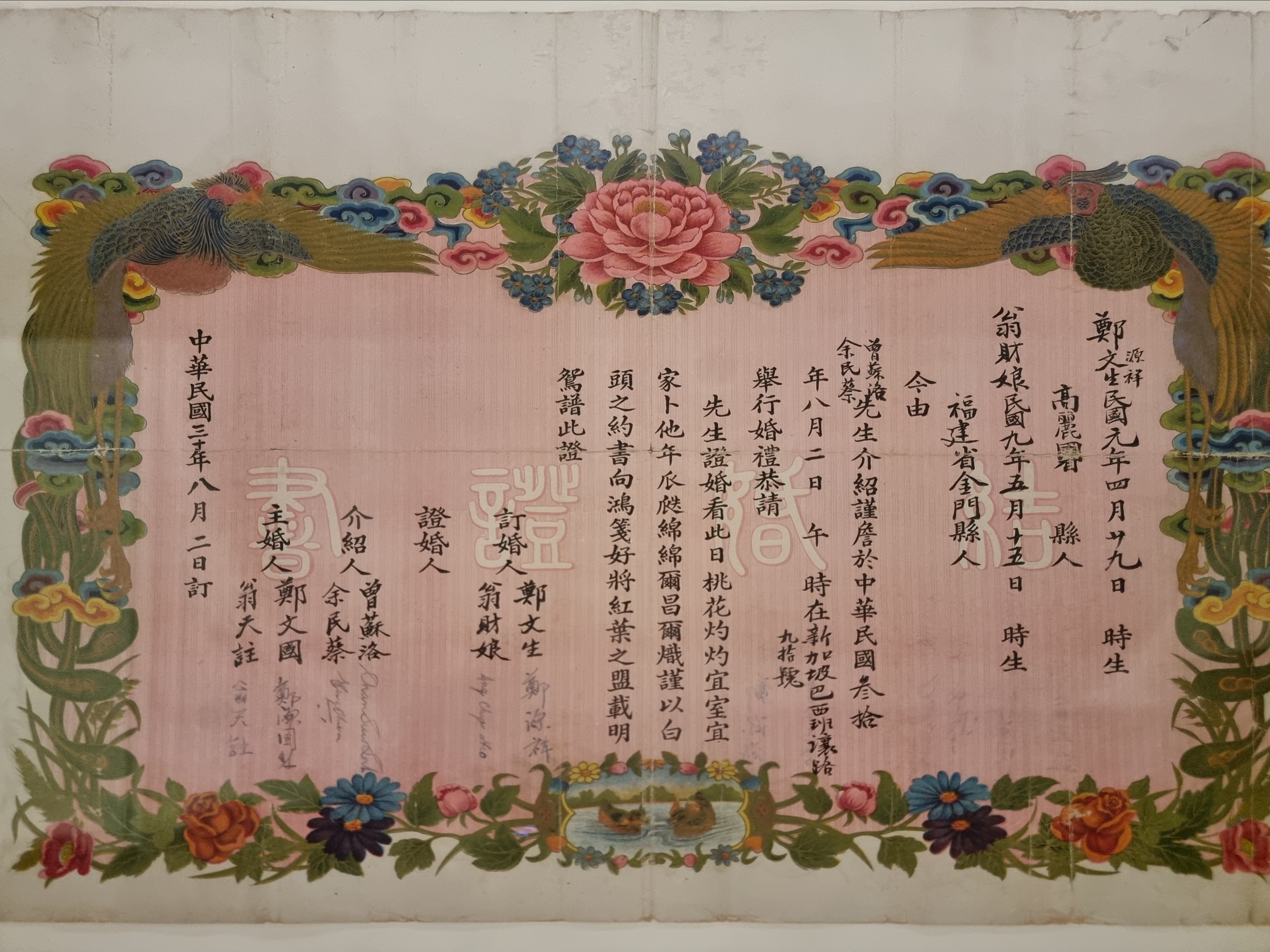A 'traditional Chinese marriage certificate' with a story to tell
Recently I came across a “Traditional Chinese Marriage Certificate” from 1941 that was more than meets the eye.
In the National Gallery Singapore, which is based in the former Supreme Court and City Hall buildings, there is an exhibit on the Women’s Charter, a pioneering piece of legislation on women’s rights in Singapore (Wikipedia). The display gives a short history of the evolution of marriage customs and law in this territory, and this marriage certificate initially caught my attention because of its colourful design, but a closer look revealed interesting details that were not mentioned in the museum’s label.


First, the basic facts:
- The groom and bride were named Cheung Won Sang (鄭文生) and Ang Chye Neo (翁財娘) respectively.
- The marriage took place on 2 August 1941, at 90 Pasir Panjang Road, Singapore.
- The pair were introduced by 曾蘇洛 and 余民蔡 (listed as 介紹人, which could be translated as “proposers”)
- The officiants were named 鄭文國 and 翁天註.
Now the interesting details:
- The groom was not Chinese, but Korean. In fact, he was the first president of the Korean Association in Singapore, and lived to the ripe old age of 103. He would have been 25 years old when he got married. According to the association’s website, his father was an independence fighter who helped An Jung-geun assassinate the Japanese official Ito Hirobumi during the Japanese occupation of Korea. Next to the names of the groom and bride are stated their ancestral places of origin. The bride’s ancestral home was Kinmen (金門縣) in China’s Fujian Province, while the groom’s was given as 高麗, an archaic name for Korea.
- The bride and two proposers chose to sign their names in romanized form, while the groom and the two officiants signed with Chinese characters.
- The groom signed with his alias, 鄭源祥, which is also written in smaller characters next to his birth name.
- Officiants were typically parents of the bridal pair, but given their names, 鄭文國 may have been a brother of the groom.
- Dates in the certificate are all given in the Chinese Republican calendar, starting with Year 1 (1912 CE). Under which legal system was this marriage recognised?
In short: A Korean man living in colonial Singapore assimilating to Chinese marriage custom and Republic of China marriage laws and using the Sino-Korean (Hanja) form of his name(s), marrying a Chinese woman who preferred to sign her name in roman script.
I think that just labeling it as a “Traditional Chinese Marriage Certificate” without further comment was a missed opportunity!
Incidentally, 90 Pasir Panjang Road today is a row of shophouses (I don’t know whether the current building was already standing in 1941) with restaurants and a coffee shop. I had dinner at the fish soup stall recently, tastes good and reasonably priced.